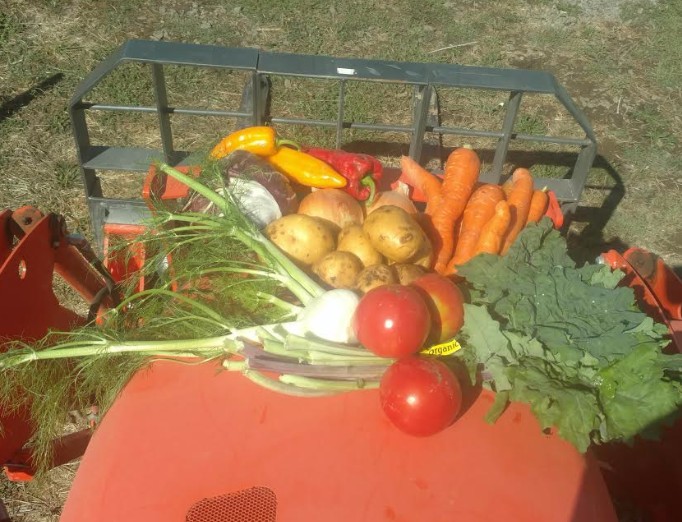Week #16!
In Your Share This Week
- Carrots
- Fennel
- Kale
- Onions
- Potatoes
- Radicchio
- Sweet Peppers
- Tomatoes
Crop Highlights
Red Ursa Kale: This variety of kale was bred by Frank Morton, who, together with Karen Morton, founded Oregon’s own Wild Garden Seed company in 1994. Wild Garden Seed is an organic seed and vegetable farm located in Philomath, Oregon, and we order many of our seeds from them. Breeding Siberian Kale with Red Russian Kale, Frank Morton created Red Ursa, and won an award for it when it was selected as one of the ‘5 Best New Introductions of 1997’ in the National Gardening Trials. It adds a nice color and texture to meals, and is tasty both cooked and raw.
Radicchio: This Italian chicory is tried-and-true, our favorite to grow at SIO. It is big and beautiful and bitter in the best way. If you want to mellow the bitterness, you can grill or roast it. My favorite way to eat it is raw, mixed with shaved carrots and an orange-honey vinaigrette.
Yukon Potatoes: They have some blemishes, but are still super tasty!
Remember to check out Katherine’s recipe blog for new, delicious cooking tips:
http://www.cookwithwhatyouhave.com/sauvie-island-organics-recipes-tips/
Around the Farm
After a scorcher of a summer, it appears that fall is upon us! It was wet and chilly these past couple of mornings, but we (and the greens we harvest every morning) are appreciative of the shift in weather. Here’s a look at parts of SIO this time of the year:
What’s left in our greenhouse: herbs, kale, chard and lettuce for the winter!

Our baby brassica field for salad mix (arugula, mizuna, and various other mustards). The white cloth on the fields is Reemay, the row cover I mentioned in last week’s blog. It does a great job protecting these tasty little plants from insects.

Look at all of the celeriac! This is the field we harvested last week’s celeriac from, and there will be plenty more to come! Beyond the trees in the background exists a wetland; we are excitedly awaiting the return of migratory birds to the area.

We call these ‘squash boxes’, but we harvest most of our root veggies into these boxes too. Our managers tractor these boxes out to the fields we’re working in, and we put a plastic liner in them and fill them to 600 lbs. of beets, carrots, corn, celeriac, cabbage, or winter squash. They can be stacked on top of each other (as you can see from the picture), saving space in the cooler, and saving us from time spent washing loads and loads of smaller bins. These are also the boxes we use when we send our veggies to long-term storage over the winter. Thanks Jerry and Brian, for building some of these last year!

Last but not least:


